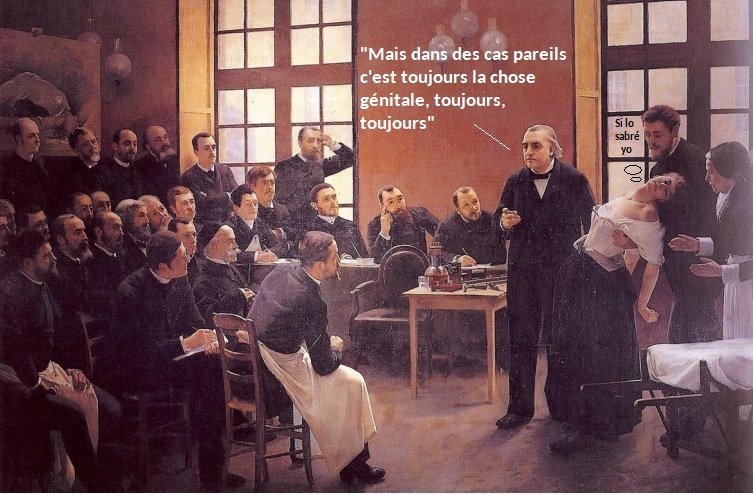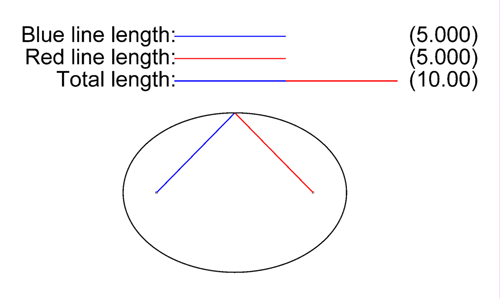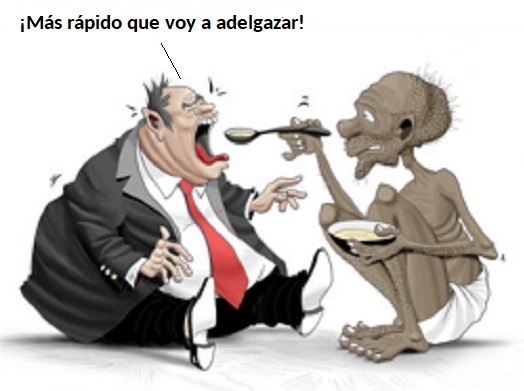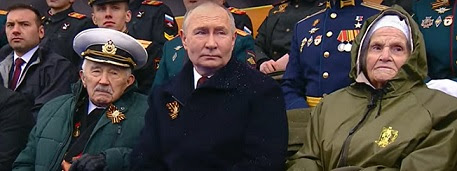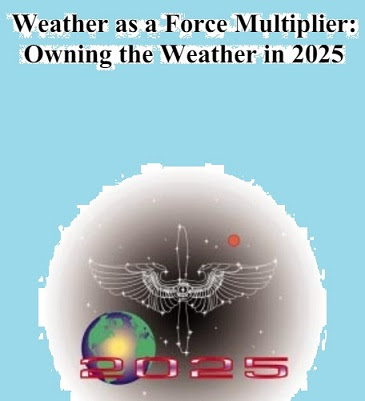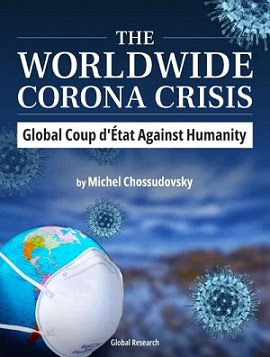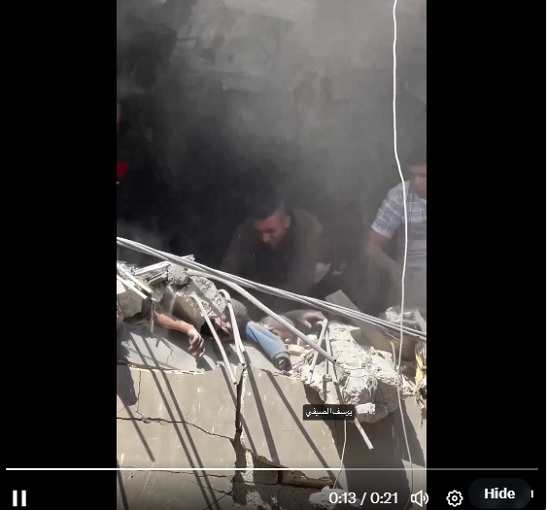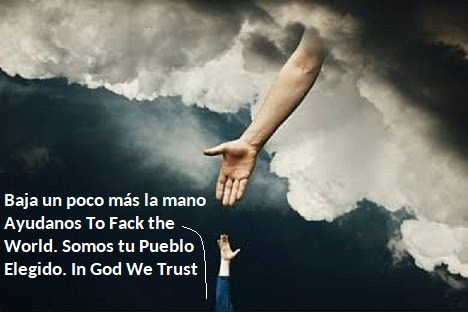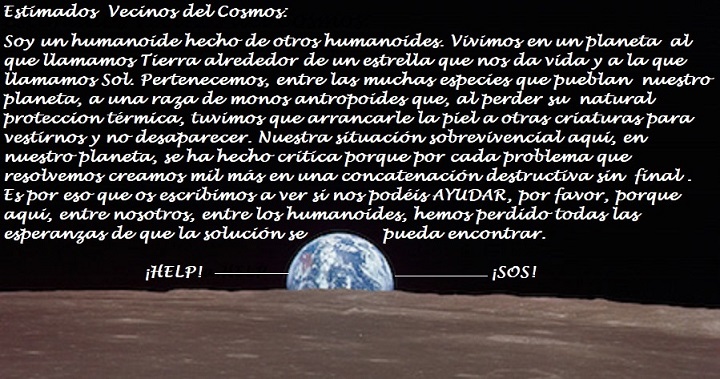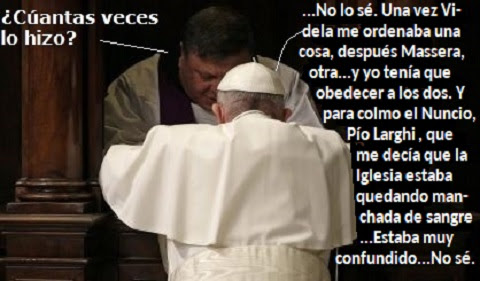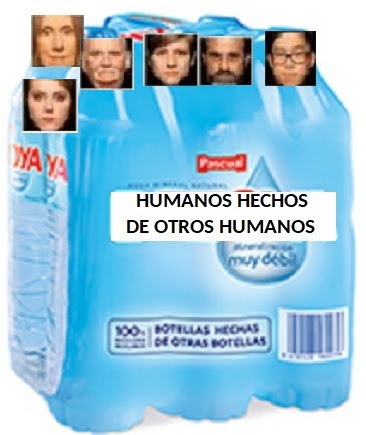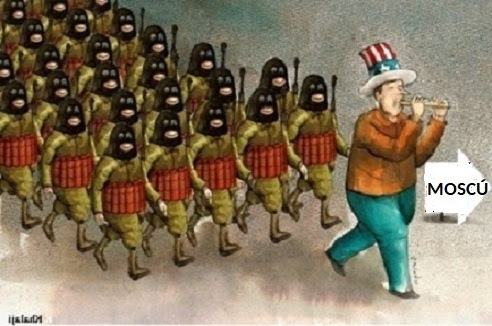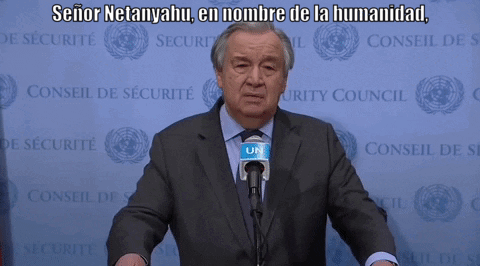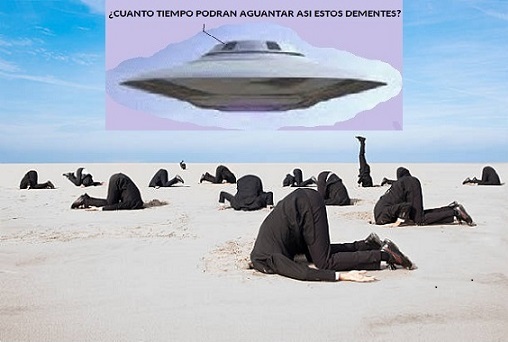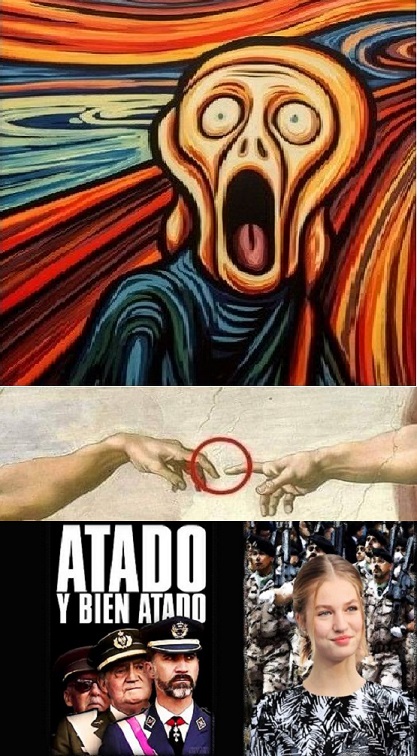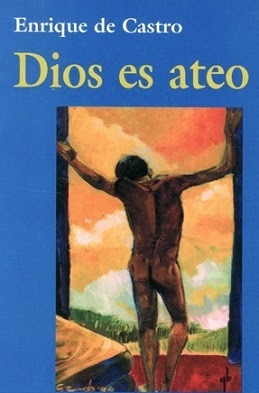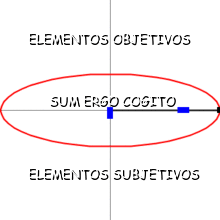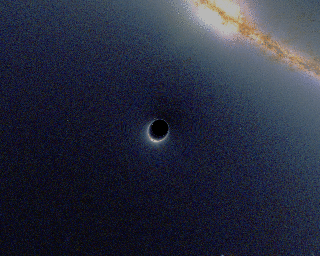Investigadores del Instituto de Ciencias Básicas de Corea (IBS) han cuantificado por primera vez la dualidad onda-partícula del mundo cuántico y observado en tiempo real el mecanismo que permite al observador interferir en la realidad.
La dualidad onda-partícula es un concepto de la mecánica cuántica según el cual no hay diferencias fundamentales entre partículas elementales y ondas, ya que las partículas pueden comportarse como ondas y las ondas como partículas.
En consecuencia, los objetos cuánticos son complementarios, es decir, no se pueden medir a la vez sus dos cualidades fundamentales: o bien se mide la dimensión onda, o bien solo la dimensión partícula, según estableció Niels Bohr en 1927.
El electrón, por ejemplo, es onda y partícula a la vez, pero se describe por una función de onda: es la que facilita la probabilidad de encontrarlo en alguna parte para utilizarlo en cualquier función tecnológica (la electrónica).
La física cuántica es por ello esencialmente probabilística, a diferencia de la física clásica, que es determinista (puede establecer con exactitud el próximo eclipse solar).
A pesar de su impredecibilidad, la física cuántica ha permitido desarrollar tecnologías inimaginables en el siglo XIX, como la información y la comunicación cuánticas, la metrología, las imágenes y la detección cuánticas.
Problemas sin resolver
Sin embargo, en la ciencia cuántica todavía hay problemas sin resolver e incluso incomprensibles, como la misma dualidad y complementariedad onda-partícula, entre otras paradojas.
Los científicos del Instituto de Ciencias Básicas de Corea (IBS) han obtenido una base nueva y más cuantitativa de la misteriosa dualidad onda-partícula que ilumina mejor esta cualidad cuántica.
En un giro del clásico experimento de doble rendija, utilizaron fuentes de fotones controladas con precisión para medir en tiempo real el grado de onda y partícula de un fotón mientras atraviesa un obstáculo.
Sus resultados, publicados en Science Advances, muestran que las propiedades del observador (un sensor) influyen en el carácter de onda y partícula del fotón. Este descubrimiento complica y desafía la comprensión común de la complementaiedad,señala al respecto la revista PhysicsWorld.
Tema relacionado: Filmada por primera vez la observación cuántica
El laberinto de la doble rendija
El experimento de Young, más conocido como el experimento de la doble rendija, concebido en 1801 por Thomas Young para averiguar la naturaleza corpuscular de la luz, ha sido básico para demostrar la dualidad onda-partícula.
Es un experimento que contiene toda la magia del mundo cuántico, pues pone de manifiesto dos cosas: que, a nivel elemental, los objetos físicos pueden comportarse como un conjunto de partículas (y no pueden por ejemplo atravesar una barrera física) o también como una onda que atraviesa obstáculos, como las ondas de radio que pasan a través de las paredes.
El experimento de Young pone de manifiesto también algo todavía más insólito: que la medición u observación influye en el comportamiento de las partículas, determinando que se manifiesten como ondas o como corpúsculos. Ocurre con fotones, electrones, protones o neutrones.
¿Qué ocurre en el experimento de la doble rendija? Es difícil de describir, porque en algún momento de su desarrollo cualquiera de esas partículas deberá «decidir» qué hace cuando se encuentra con una pared que no puede atravesar. En ese momento, «observa» que tiene dos rendijas que le hacen «pensar»: ¿y si la atravieso como onda, pasando a través de las rendijas?
Patrón de interferencia
Al final se decide y atraviesa la pared a través de las dos rendijas, convertida en una onda. Una vez situada al otro lado de la pared, se vuelve partícula y tropieza con una pared posterior que no tiene rendijas: entonces impacta en un lugar de la segunda e infranqueable pared y deja una huella.
El experimento tiene su miga: a medida que más partículas atraviesan como ondas la doble rendija, en la segunda pared se reflejan los impactos de las partículas en las que se han convertido de nuevo, pero no se agrupan de forma aleatoria (como podría esperarse), sino siguiendo un orden que vendría determinado por su comportamiento ondulatorio. A ese orden se la llama patrón de interferencia.
Y lo más sorprendente: todo ese proceso ocurre porque lo estamos observando. Cuando las ondas atraviesan las rendijas, se «dan cuenta» de que hay un detector y reaccionan volviéndose partículas. Se «arreglan» para salir en la foto al notar el detector (un interferómetro).
El principio de complementariedad establece que ambos resultados experimentales, tanto el relativo a la partícula como a la onda, son necesarios para comprender completamente la naturaleza cuántica de, por ejemplo, un fotón.
Fotón seducido
El nuevo estudio ha profundizado en estas paradojas y determinado que las propiedades de las rendijas también son importantes para que la dualidad onda partícula se produzca.
Los investigadores mejoraron el detector presente en la rendija y potenciaron la atracción que despierta en un fotón para que pueda atravesar la pared.
Esto permitió a los investigadores apreciar mejor el momento en el que el fotón muta de partícula a onda y determinar cómo su naturaleza ondulatoria se refleja en el patrón de interferencia que aparece en la segunda pared.
Eso significa, destacan los investigadores, que, durante el experimento, el fotón cambia de partícula a onda y luego otra vez a partícula, no solo por decisión propia, sino influido también por el detector colocado en la rendija que lo deja pasar.
También significa que los impactos en la pared sin rendijas siguen un patrón (de interferencia) que emana de su comportamiento ondulatorio. De esta forma, la partícula deja constancia del fugaz momento en el que fue onda, una especie de recuerdo cristalizado en la segunda pared.
Estamos en lo cuántico
El nuevo experimento parece confirmar lo que decía Bohr en los años 20 del siglo pasado: que no somos meros observadores de lo que medimos, sino también actores. Estamos en lo cuántico.
El nuevo experimento de la doble rendija dice algo más. Explica cómo se produce esa interacción entre el observador y la realidad: a través del sensor situado en la rejilla, ejerce una atracción sobre el fotón para animarlo a bailar entre la onda y la partícula, en función de nuestros intereses científicos (que consiga atravesar la pared y observar en detalle todo el proceso).
Los investigadores señalan al respecto en un comunicado: «Richard Feynman dijo una vez que resolver el rompecabezas de la mecánica cuántica radica en la comprensión del experimento de la doble rendija.»
El nuevo descubrimiento nos acerca más a esa comprensión, sin por ello poner fin a los misterios todavía por descubrir que siguen asociados al experimento de la doble rendija.
::::::::::::::::::::::::::::

Sacado a luz January 2, 2010
To find out what is really going on, let us consider one last experiment. In this experiment a scientist, we shall call her Joanne, takes part in simulating an experiment which is being filmed in order to be shown later to physics classes.In class she uses light photons, but here she'll use electrons in the famous "double-slit experiment." Joanne sets up an electron gun on the table similar to the one that is in the back of picture tubes in television sets and which coats the back of the TV screen producing the picture which a person, who is out in the room watching TV, sees.She aims a beam of electrons first toward one screen with two slits in it. Once the beam passes through the slits, it moves on to a second screen called the target screen, because on that target an image will be formed. But instead of a TV picture, the image to be formed is the electrons hitting a chemical which coats the screen. That chemical glows when the screen is hit (see illustration 1).Joanne has arranged so that the slits can quickly be covered up with small flaps. If she wants, she can quickly cover up and uncover the slits again. Joanne can thus run the experiment with one slit open and the other closed (see illustration 2).Joanne places sensors behind the target screen which are linked by wire to a computer with a printer...
...(see illustration 3). The computer then makes a record of each time an electron hits the target screen; and at the end of the experiment the computer can produce a printout which contains a permanent record of any pattern formed by the electrons during the entire experiment (see illustration 3).
When Joanne ran the experiment with just one slit open and studied the printout later, she saw a group of dots indicating where the electrons had hit on the second screen behind the open slit on the first screen, as illustration 3 shows.With one slit open, electrons act like billiard balls. Physicists call tiny billiard-ball-like entities particles. To see what happens, we have to change the subject for a moment and, as Monty Python's announcer used to say, consider something "completely different." In this case we want to go to the seashore where there is a sea wall that an evil prankster has done a mean trick to. He has ripped down part of the sea wall leaving a big gap in it.So with one slit open, it looks as if electrons are particles. But when both slits are open, something funny happens.
In illustration 4, we see what happens if in the sea wall there is one big gash which is very wide and if the waves coming in are not very wide. In fact these waves are more narrow than the sea wall itself. But if the waves are narrow enough, the waves for all practical purposes pass through the sea wall as if it were not there, and there is very little bending of the water... ...Illustration 4 is something of an idealization since the water will bend some as it goes past the sea wall.
Now let us consider another sea wall which has not just one gap in it but instead has two gaps in it (see illustration 5). These two gaps or slits in the wall are far more narrow than the one gap in the first wall that we talked about. In the case of the second wall with two slits in it, almost every wave that comes crashing into the wall is much wider than each of the two gaps. The waves are significantly bent as they pass through the two paps in the sea wall. Furthermore, after the...Next comes the last part of the experiment.Joanne tests some electrons. She first sets up a screen made of crystals in which the two slits can be opened and closed quickly. She aims an electron gun, which is like the one in the back of a picture tube in a television set; and she sets up a second target screen which glows (see illustration 6). The targeted screen in Joanne's experiment is again hooked up to a computer and printer.To begin the experiment, Joanne opens one slit and fires the electrons. A bullet-like particle pattern glows on the screen in the area behind the slit on the first screen, and the computer printout shows a bullet-like particle pattern in the area behind the open slit just as would be produced if the electrons were tiny billiard balls. So if electron make the same pattern that tiny billiard balls would make, that leads one to assume that electrons must be particles, tiny billiard billiar ball-like entities.......But now Joanne opens both slits.Here comes the quantum magic!. Since the electrons pass through both slits, an interference pattern glows on the target screen and the pattern is duly recorded on the printout. There are stripes on the target screen areas other than on areas behind the two slits on the first screen. That must mean that the electrons were waves. That would mean that before the electrons are measured, they must be a ghostly combination of waves and particles! It should be pointed out that physicists have disparate views as to what electrons and other quantum particles really are. One scientist at my own university publishes on his view that all are waves and that there are no particles! Many maintain that quantum particles are both...So it looks as if when one slit is open, electrons are particles but when two slits are open, electrons are waves!.
(See illustration 7.)
As the reader will learn in later pages of this book, I argue that Sometimes they in a sense manifest both wave and particle aspects simultaneously.quantum entities are ultimately forms of information which express themselves under certain conditions as waves and, under other conditions, as particles.
It would have to be a picture using vague double exposure in which a ghostly beach ball was superimposed over a ghostly ocean wave. Again the technical name for this ghostly status is superposition. (Schrödinger's cat would be a ghostly movie of a dead cat superimposed over a cat that was alive and washing itself. A movie of electrons in ghostly motion and in a number of ghostly places would be the best we could do to capture Heisenberg's example of electrons in superposition.)It is quite difficult to picture what an electron would look like before it was measured.
It turns out that electrons are not the only subatomic entities which are both waves and particles before they are measured.
Illustration 7 • Part 3
KEY: When both slits are open in the first screen (Part 3A), waves emerging from behind the top slit and waves from the bottom slit arrive at areas directly behind the two slits in the first screen and produce glowing stripes.
But waves also reach other areas to produce strips which are not behind the two slits in the first screen ( as indicated by X's).When only one slit is open (Part 3B), particles emerge from only one slit and form a bullet-like pattern on the second screen only behind the open slit in the first screen.So are the photons, the quantum entities which constitute light. Protons and neutrons, which together compose the vast majority of the matter which makes up our everyday world (the electron is practically weightless), can also take part in a double-slit experiment.In 1977, Samuel A. Werner of the University of Missouri at Columbia made neutrons pass through the double slits. In theory, there is no reason why protons cannot be sent through the slits also. Therefore, gentle reader, And atoms in turn are made up principally of three quantum entities: protons, neutrons, and electrons. Since your body, my reader, is a part of the physical universe, In fact, in some experiments begun in the late 1980's and ongoing into the 1990's, David E. Pritchard of the Massachusetts Institute of Technology has been forcing whole atoms to go through the slits. Pritchard says that someday scientists may even be able to send large biologically significant molecules through the slits and even one-celled creatures like the amoeba.everything in the everyday world, all the trees, flowers, rocks, cats, dogs, and humans that you see around you all the time—are ultimately quantum since all in the universe is made up of atoms.
your body is also ultimately a quantum entity. So your body, too, must also somehow be subject to the wave-particle duality.
In the theory there is no reason why the cells which make up your body could not be made to travel through the slits. But that day is far off. The problem is size and time. It seems that the larger an object, the longer it takes to go through the slits. It is also true that the heavier an object is (and everyday-world objects tend to be, when compared to atoms and to quantum entities, quite large) the shorter is something scientists call quantum wave length by which they mean the size of the waves which makeup the wave aspect of the entity.We humans are so huge that the waves which make us are extremely tiny. We would also have to go through the slits extremely slowly.
There are only two ways to get the waves which compose an everyday world object to pass through the slits so that they could be detected at the target screen and be reassembled again on the other side of the slits in front of the target screen: (1) Either shrink the objects drastically or (2) slow down even more dramatically time of passage through the slits. Since we humans do not wish to be shrunk, should we ever decide to journey through the slits we would have to pass through the slits with mind-boggling slowness. So any human who wishes to submit to the ministrations of a Solomon-like physicist and to take the journey through the slits and then be safely re-assembled in front of the target screen had better be gifted with longevity.Pritchard estimates that the time that it would take is many billions of years-longer than the age of the universe. There is one option which Pritchard apparently has not considered: scientists might be able someday to record the information which makes up a human body on an electronic or photonic medium.The scientists could then send a person through the slits as fast as they can electrons or photons. The information would be reassembled on the other side of the slit.
So what are atoms and protons and neutrons and electrons and photons, really and truly, before they are passed through the slits and measures?
The advocates of the traditional interpretations of the quantum theory have an answer. Their version of the theory is called the Copenhagen interpretation, after the University of Copenhagen where the physicist Niels Bohr set up a research institute. He was the mind which had the most to do with formulating the theory. So if we (and by we I mean you, my dear reader, and I myself) have not yet been sent through the slits, does that mean, as the Copenhagenists would have it, that we are not real?The Copenhagenists say that the electrons, protons, and neutrons in your body before they are measured are not truly real.
So if we— and by we I mean you, my dear reader, and I myself— have not yet been sent through the slits, does that mean, as the Copenhagenists would have it, that we are not real?.How do electrons, when measured, suddenly stop being a ghostly combination of wave/particle and suddenly become either a wave or a particle? How do the quantum entities which make up the cat, the computer, the printout and us suddenly pop into place when someone takes a look?Do we humans exist when someone is looking at us even if we have not been through the slits?We can take a step toward answering all these questions and toward understanding how this quantum magic really works—even it if means departing somewhat from the Copenhagen interpretation—if we listen to Wojciech H. Zurek of the Los Alamos National Laboratory when he points out that as an electron travels along and as time goes by, the electron interacts with its environment and this causes it inevitably to becamedistinguishable— at that point the quantum pop takes place.William K. Wootters of Williams College has found that such quantum phenomena as the Heisenberg uncertainty principleand the wave-particle nature of quantum entities can be beautifully and correctly expressed in terms of information theory. In this finding, Wootters echoes the dictum of his teacher John Archibald Wheeler that all of quantum theory may some day by rewritten as a branch of information theory. (...) The electron then becomes a particle or a wave as it reaches the slits. Some scientists enjoy adding extra crystals after the electron has passed through the slits in order to change the electron yet again into either a wave or a particle.They propose that as the electron goes about its business it is picking up information from its environment, and that information brings on the quantum pop
In that case, electrons could go through both slits as waves but could then be turned into particles again immediately after they have passed through both slits.These experiments are the so-called delayed choice experiments: Therefore, they conclude, the mouse does create the moon by looking at it and creates the universe by listening to static on the radio. But if the theory that I am talking about in this book is correct, adding extra crystals after the electron passes through the slits—while it shapes the ultimate outcome of whether the electron will be a particle or a wave, does not create the particle or wave.Instead it adds additional information to the electron as it moves along by changing its status from wave to particle. So if my theory is right, the mouse did not create the universe. Instead:a burst of energy called the Big Bang together with a lot of reshaping of that energy by naturally occurring information, created both the world and the mouse.
In the theory of the quantum world which I am outlining here, the pass sometime can, to a degree, be reshape by information which is added in the present. In this case, changing the electron to a wave now means that it was a particle earlier.But the past cannot be completely created by what is done in the present: for if there had been no energy or information present there would have been no electron around to be reshaped. We humans are composed of matter and energy and information both before and after we pass through the slitsSince it is information which allows us to mould electrons to shape what their ultimate future status, wave or particle, will be, and since in limited ways we can also modify their past, I want to pause here for a moment to explain just wha I mean by the term information.In common parlance information means, "something found out," or "something that is new or interesting," or "something that someone needs to know."But this is not the way the term is defined in science called information theory; a field which forms part—but not all—of the background to the new theory discussed in this book. I shall offer a more full definition of information in the pages that follow, but right now I want to say that, information means "knowledge that makes a crucial difference in the way the physical world and the world of the mind operate."The term information first came into wide use in communication theory at that point where communication theory interfaced with electronics—in the making of, for example, very sophisticated telephone switching systems and especially in the making of computers. That does not mean that when I say that the human mind is rich in information I am necessarily implying that the brain is like a computer in every way.Computers use binary information; so do brains in part of their action. But as we shall see later in this book, brains use other types of information, too.In the view of communication engineers, information is involved with energy, but information itself is not a form of energy. Instead, information can be looked upon as a restraint upon the changes that take place in energy.So the paths down which an electron travels place restraint on what its form is or will become, and eventually the information contributes to the collapsing of the wave function, to causing the quantum pop.Then the electron takes on a definite form, either wave or particle. In other words, according to the new theory I am advocating in this book, as the electron moves along it gains from the world more and more information about the world.And this information is in the form of answers to what we might describe as the electron's constant question: "Which way shall I move next?"In short, this information is about the electron's future. As the electron journeys from the electron gun to the target, it expresses more and more information as it moves along until finally as it hits the target it achieves a quantum pop.
What does exist, then, before the quantum pop takes place?I like to call it a special kind of information.Werner Heisenberg suggested that what existed before the pop took place were waves of potential energy which Heisenberg called potentia.One answer as to how potentia can exist was provided by the physicist David Bohm (1917-1992). In his version of the double-slit experiment, a quantum entity such as an electron is not purely potentia but is instead a real electron which is provided by nature with pre-information about the path that it was going to take through the double slits.This pre-information, called the quantum potential, is gained by the electron through a kind of radar—and that is where Bohm's waves of potentia come into his picture of the quantum world.The radar wave would be sent out by the electron during the electron's journey toward the two slits to warn the electron that the slits were up ahead.In Bohm's version of the double-slit experiment, the electron is guided by the smaller guide wave to that point on the second screen where it will make his contribution either to the wave pattern or to the particle pattern.When both slits are open the electron knows in advance that it will be heading toward the wave pattern. The guide wave is like radar and gives the electron this information ahead of time.When only one slit is open, the electron is told by the radar wave that it will be piloted to the particle pattern.Since an electron in an experiment cnducted in outer space, traveling through space, would be moving at the speed of the light, the guide wave would have to move faster than the speed of light.And for this reason Bohm's ideas when first published in the 1950's were rejected by many physicists.But later, as we shall see, we learned that nature can and does in certain circunstances make use of faster-than-light connections.The radar waves themselves move so fast that they can never be detected by our finest instruments. When a measurement is made, these pilot radar guide waves are destroyed by the measurement process, but they have changed the way that the particle will move because they have changed the arrangement of the possible paths down which the electron could travel.
Most physicists today, whether or not they accept Bohm's theory with its controversial faster-than-light radar wave feature, do accept the notion that in the double-slit experiment when an interference pattern is built up, it is really the potential paths that the electron can travel which interfere with each other. 






























































































































































































